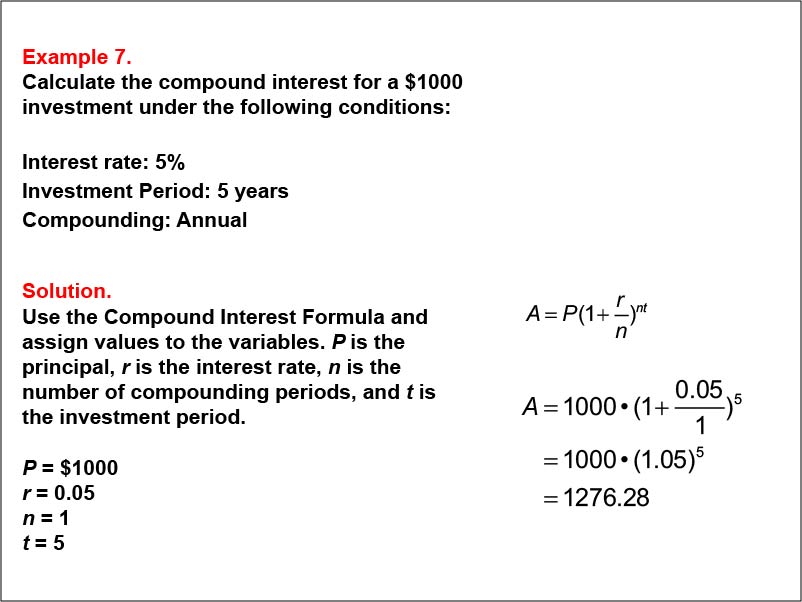
Display Title
Math Example--Math of Money--Compound Interest: Example 7
Display Title
Math Example--Math of Money--Compound Interest: Example 7

Topic
Math of Money
Description
This example calculates compound interest for a $1000 investment with a 5% annual interest rate over 5 years, compounded annually. Using the formula A = P(1 + r/n)nt, where P = 1000, r = 0.05, n = 1, and t = 5, the final amount is $1276.28.
Compound interest is essential in understanding how investments grow over time. This example emphasizes annual compounding and its effects on investment returns. By examining different compounding frequencies, students can appreciate how often interest is applied impacts overall growth.
Multiple examples allow students to see how varying conditions affect outcomes in compound interest calculations. This exposure helps them identify patterns and understand the significance of different variables, enhancing their analytical skills.
Teacher Script: "Today we'll calculate compound interest using an annual rate of 5% on a $1000 investment for 5 years. We'll see how this affects your total return compared to other compounding intervals."
For a complete collection of math examples related to Compound Interest click on this link: Math Examples: Compound Interest Collection.
| Common Core Standards | CCSS.MATH.CONTENT.7.RP.A.3, CCSS.MATH.CONTENT.HSF.LE.A.1, CCSS.MATH.CONTENT.HSF.IF.C.8.B |
|---|---|
| Grade Range | 8 - 12 |
| Curriculum Nodes |
Algebra • Exponential and Logarithmic Functions • Compound Interest |
| Copyright Year | 2013 |
| Keywords | interest, compound interest, math of money |